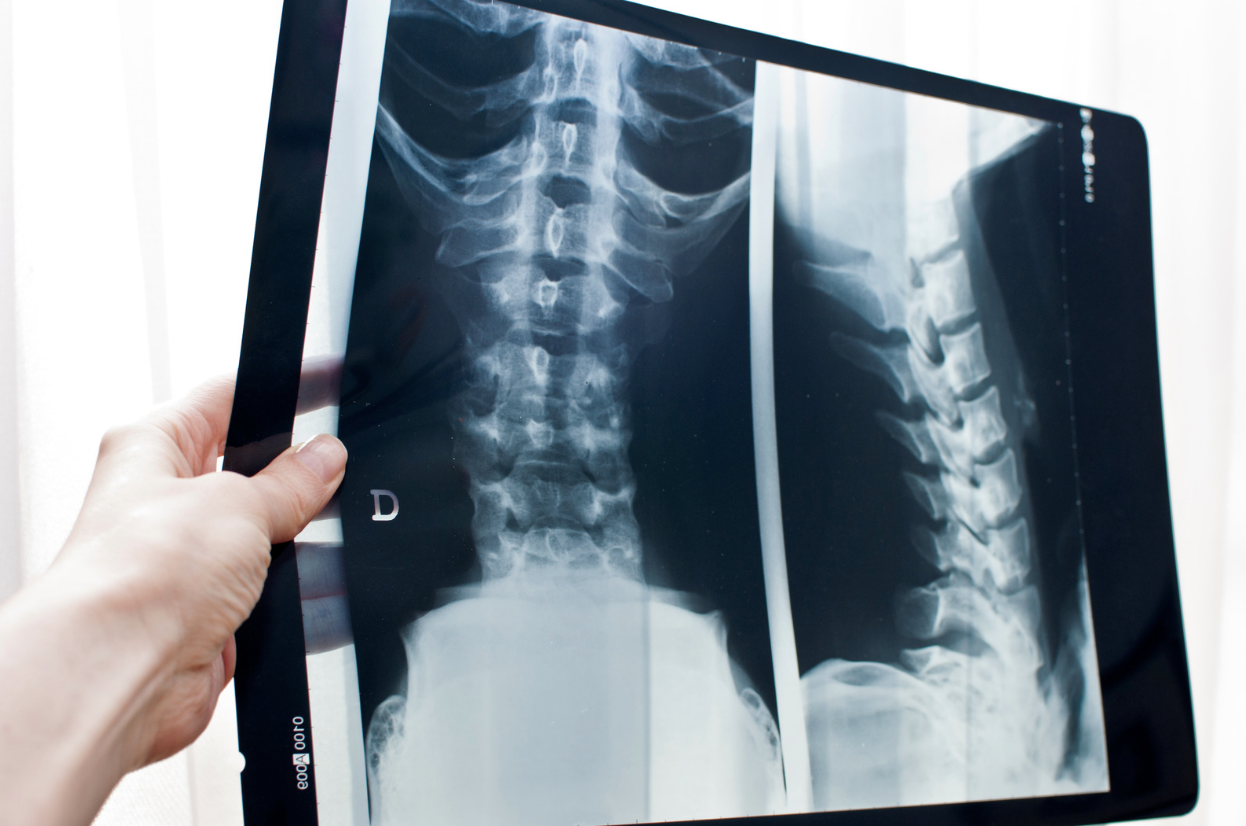Table of Contents
- Back Pain – Condition
- Disability For Back Pain
- How To Apply For Disability For Back Pain
- What Should I Do If I Get Denied?
- What Kind of Benefits Can You Get?
- Conclusion
- Sources and Additional Resources
If you suffer from back pain and it affects your ability to work, you may be eligible for Social Security disability benefits. Disability benefits are available for people who have certain types of disabling back pain as well as their dependents. To qualify, you must have supporting evidence (e.g., test results, medical records, etc.). To learn more about how to qualify for Social Security disability benefits for back pain, keep reading.
Back Pain - Condition
With as many as 80% of Americans experiencing back pain at some point in their lives, back pain is a very common condition.
What Causes Back Pain?
The back is a complex structure of bones, muscles, ligaments, and joints. As such, back pain can have various different causes. Common triggers involve spraining ligaments, straining muscles, ruptured disks, and joint irritation—often arising from activities as mundane as bending to pick up an object. Furthermore, poor posture, psychological stress, and obesity can also contribute to or exacerbate back pain. Lastly, back pain can also come about as a result of internal organ-related issues like blood clots, kidney infections, kidney stones, or bone loss.
Back Pain Symptoms
Back pain can manifest differently in individuals, making it important to recognize the signs and symptoms that may lead to disabling pain. Symptoms of back pain may include:
- Constant or chronic back pain
- Pain radiating down the legs
- Numbness or tingling in the legs
- Muscle weakness
- Difficulty standing or walking
- Limited range of motion
If left untreated or ignored, these symptoms can worsen over time and result in disability.

Back Pain Diagnosis
Medical professionals use a range of diagnostic methods to assess back pain and potentially related disabilities. These methods include physical examinations, assessments of medical history, imaging tests (such as X-rays, CT scans, and MRI scans), and sometimes laboratory tests to rule out underlying causes. The physical examination involves evaluating posture, muscle strength, reflexes, and pain triggers while considering the individual's medical history. Coupled with this, imaging scans—able to detect structural abnormalities or underlying conditions contributing to back pain-related disabilities, such as herniated discs, tumors, or spinal stenosis—can provide medical professionals with more information regarding your condition to better help them determine a diagnosis. Ultimately, these steps are essential for accurate diagnosis and the development of a suitable treatment plan.
Treatment Options for Back Pain Disability
Medical Management. Medications can play a crucial role in managing the pain and discomfort associated with back pain-related disabilities.
Non-Invasive Therapies. Non-invasive therapies such as physical therapy and chiropractic care can also be highly effective in treating chronic back pain. This is because such therapies are geared towards improving spine health as well as alleviating back pain. By using a combination of exercises, stretches, and manual therapies, physical therapists can help improve flexibility, strengthen muscles, and alleviate back pain. Physical therapy can also improve overall functionality and promote better posture, reducing the risk of further injuries.
Chiropractic care focuses on diagnosing and treating musculoskeletal disorders and disabilities. By using spinal manipulations, adjustments, and other manual techniques, chiropractors can help relieve pain, improve spinal alignment, and restore proper function to the body.
Alternative Approaches. An ancient Chinese healing practice, acupuncture has shown positive results in managing back pain disabilities—deeming its potential to be a good alternative approach. Acupuncturists aim to restore the body's energy flow and relieve pain by inserting thin needles into specific points on the body. Many individuals with back pain have reported significant improvements in pain levels and overall well-being after undergoing acupuncture treatments.
Additional Support for Back Pain
Rehabilitation Programs. Rehabilitation programs are designed to address the specific needs of individuals with back pain-related disabilities. These programs typically consist of a combination of exercises, therapies, and techniques that aim to strengthen the muscles, improve flexibility, and enhance overall function.
By customizing rehabilitation plans to individual needs, healthcare professionals can provide targeted interventions that address the root causes of chronic back pain disability. Through a multidisciplinary approach, these programs focus not only on physical rehabilitation but also on the psychological and social aspects of the condition.
- Assistive Devices. There are numerous assistive devices out there that can help people manage their back pain. Here’s a list of some of the most common ones used for managing back pain:
- Back braces (i.e., lumbar supports or orthotics) can provide both stability and support to the spine. By immobilizing the affected area(s), back braces can effectively reduce pain as well as prevent further injury.
- Ergonomic chairs and cushions can promote good posture and, thereby, can significantly alleviate discomfort during extended sitting sessions.
- Adaptation equipment and tools can also help people suffering from back pain to perform daily tasks.
Work-Related Issues and Back Pain Disability
Living with chronic pain can significantly impact one's ability to perform in their jobs and at home. Often causing discomfort and reduced mobility, pain of any sort is hard to live with. Given the complex nature of the back, this is especially true for chronic back pain.
To support individuals in the workplace, employers are legally obligated to provide reasonable accommodations (e.g., ergonomic workstations, modified schedules, reallocated duties, etc.) for people suffering from chronic pain. However, if such accommodations aren’t helping your ability to manage your pain at work, you may qualify for Social Security disability benefits.
What Are the Costs of Treating Back Pain?
According to the Journal of the American Osteopathic Association, the cost of treating back pain has a major worldwide economic impact. Patients suffering from musculoskeletal conditions incur medical costs of about $240 billion per year in the United States.
Patients suffering from back pain can expect to pay co-pays and coinsurance for doctor visits, chiropractors, and physical therapy. There are also costs for prescriptions such as painkillers, steroids, and muscle relaxers. Some patients also have to get steroid injections. There are also tests such as x-rays, MRI scans, and CAT scans and visits to specialists.
The average individual with back pain who has health insurance pays out anywhere from $1,500 to $3,500 per year for treatment. Back surgery is expensive, and can vary in cost from $20,000 to $150,000 depending upon the kind of surgery and the hospital where it is performed.
If you require such treatments, maintain all copies of your scans, invoices, notes, etc. These will help prove that your back problems are severe.
Use our disability calculator to see how much you could earn with disability benefits for back pain.

Disability For Back Pain
What Are Disability Benefits?
A form of monetary compensation, disability benefits are provided by governments or private organizations to financially assist eligible individuals with disabilities who are unable to work or have limited income. These benefits help cover basic living and medical expenses. While there are multiple federal agencies that provide disability benefits, the United States Social Security Administration (SSA) is the one of utmost importance and relevance to back pain disability. As such, we will be focusing primarily on the disability benefits offered by the SSA in this guide.
The SSA offers two disability benefit programs—Supplemental Security Income (SSI) and Social Security Disability Insurance (SSDI).
- SSI provides benefits for eligible people or families who have limited income(s) and resources.
- SSDI provides benefits for eligible individuals who have a qualifying disability and work history (measured by work credits).
Is Back Pain A Disability?
The short answer to this question is, “it depends.” Most notably, the answer to this question depends on the severity of your symptoms. While back pain is a common concern for many people, disability—in the eyes of the Social Security Administration (SSA)—means that a condition makes it really tough for you to function and carry out your daily activities (e.g., work). So, if your back pain significantly affects your ability to do these things, it might be considered a disability.
Now, it's important to think about whether your back pain is chronic or temporary. Chronic back pain lasts a long time, often for at least a year or more. If your back pain is chronic and it makes it hard for you to work, then it could be seen as a disability, especially if it meets the criteria set by Social Security. Remember, the impact of your back pain on your daily life and work abilities is what matters most when determining if it's a disability.
Can You Get Disability for Back Pain?
Yes, you may be able to get Social Security disability benefits for back pain if you suffer from a condition that causes severe pain, impairs your ability to function (and, thereby, work), and lasts for at least one year. Unfortunately, the SSA can make it difficult to get these benefits for people who suffer from back pain. This is why it's essential for you to gather the necessary medical documentation to support your claim. To qualify, you must provide proof of your diagnosis for a condition(s) that causes severe symptoms and significant functional limitations, as indicated by your examinations, including X-rays, MRIs, or your physician’s notes regarding an examination, which should demonstrate an abnormality of the spinal canal or spine as the root cause of your discomfort and pain.
Given the oftentimes difficult nature of the disability application process, many people find it helpful to work with a disability lawyer who can help them gather comprehensive evidence and prepare their application.
What Back Problems Qualify for Disability?
There are several conditions that can cause debilitating or chronic back pain that qualify for disability. Some examples of back problems that may qualify for disability include:
- herniated discs
- compressed nerves
- degenerative disc disease
- arachnoiditis
- spondylitis
- osteoarthritis
- rheumatoid arthritis
- scoliosis
- spinal fusion
- spinal stenosis
- spondylolisthesis
Once again, in order to qualify for Social Security disability benefits with back pain, you must have a condition(s) that is either in or meets the criteria of a listing in the SSA’s Blue Book. In addition to this, you must be able to show the SSA that your pain is so severe that you will be out of work for at least one year as a result.
How to Apply for Disability for Back Pain
What Do You Need To Qualify For Disability For Back Pain?
To qualify for disability due to back pain, there are several requirements.
1. Meeting The Criteria Of A Blue Book Listing. The SSA uses its own medical guide to evaluate the Social Security disability applications it receives. This guide, known as the Blue Book, helps to determine whether or not an individual meets the criteria to be considered disabled and eligible for SSDI. While there is no Blue Book listing for back pain, there are listings for various conditions that do cause back pain that you might be able to use to qualify.
Many back pain problems can be classified under Section 1.04, which deals with spine disorders. If you can prove that your particular back pain meets the equivalent for spinal disorders, you would meet the requirements set forth in the medical guide.
This particular listing includes:
- Lumbar spinal stenosis – which must cause pain in the thighs, lower extremities, and buttocks resulting in difficulty walking or standing for extended time frames.
- Spinal arachnoiditis – which must result in burning, pain, and the need to shift more than one time every other hour.
- Nerve compression – which must cause a significant loss of reflexes and range of motion.
2. Sufficient Number of Work Credits (for SSDI only). Work credits are determined by your annual earnings. If you are employed and contribute to Social Security through taxes, you receive 1 work credit for every $1,640 you make while working during any given year of employment. You can earn up to 4 work credits for each year that you work.
Unlike SSI, the Social Security Disability Insurance (SSDI) program requires applicants to have a specific number of work credits in order to qualify for benefits. Since the required number of work credits depends on age, it varies for every applicant.
When applying for SSDI, you will need to submit documentation such as your most recent W2 or federal tax return, as well as details pertaining to your employment history (including the type of work you've previously undertaken) in order to fulfill SSDI’s work history requirement.
Further Reading: “How Long Do I Have to Work to Qualify for Disability?”
3. A Diagnosis From A Medical Professional. It is crucial to consult with a medical professional, typically a physician with expertise in such conditions before you apply for disability. This doctor will conduct various assessments, including diagnostic imaging and blood tests, to establish the extent and nature of your back pain. Their findings will be documented and you should include them in your application to provide the SSA with objective evidence* of your condition.
4. Convincing Medical History & Evidence Supporting The Disabling Nature Of Your Back Pain. Regardless of the cause of your back pain, you must provide evidence* of how it (1) impacts your ability to work, and (2) causes you daily limitations. Your documents need to include notes from your physician about the limitations you have when walking or standing, and if you have to have a cane, walker, or crutches in order to be mobile. These are all considered with great weight when making a disability determination decision.
Along with the evidence you submit, you should also consider including a comprehensive list encompassing all healthcare providers, hospitals, therapists, or caseworkers you've consulted regarding your back pain, furnishing the contact details for these professionals, and providing a record of your appointment history.
5. Personal Information & Identification. Lastly, you will need to provide your Social Security number and proof of identity. Any information related to marriages, divorces, and any dependent family members should also be included.
*Note: Please see the next section for a more detailed breakdown of the specific medical tests and evidence you should consider including in your application.
All in all, the SSA’s evaluation process for disability benefits is stringent and demands consistency between your reported pain and the objective medical evidence you provide in your application. Social Security assessors will examine whether your pain complaints align with the results of medical tests and other information in your application. If discrepancies arise—for instance, if you claim severe limitations due to back pain but lack corresponding medical evidence—the Social Security assessors may question the validity of your claims and may request additional medical evaluations, even involving a psychiatric examination if necessary. Therefore, it's crucial to provide accurate and truthful information to ensure a fair evaluation of your disability claim.
Medical Tests & Evidence to Include in Application
The SSDI application process can be lengthy and may involve denials and appeals. In order to establish a strong case in your favor, you should submit as much medical documentation—i.e., medical tests, evidence, and reports—as possible to prove your case. Here, we outline some of the specific medical tests you should consider including in your application to effectively support your claim:
- X-rays: These fundamental diagnostic tools offer insight into your back pain's underlying causes, including structural abnormalities, fractures, degenerative changes, and spinal misalignments. X-rays provide objective evidence of your spinal condition.
- MRI and CAT Scans: Offering detailed views of your spinal structures, nerves, and soft tissues, MRI and CAT scans are invaluable for identifying issues like herniated discs, nerve compression, or spinal stenosis, all of which can contribute to severe back pain.
- Reflex Tests: Reflex tests evaluate your nervous system's integrity, helping diagnose nerve damage or compression that may be causing your back pain.
- Straight Leg Raise Test: This test assists in diagnosing sciatica, a common condition associated with back pain. If raising your leg induces pain radiating down your leg, it can serve as compelling evidence for your case.

Keep in mind that the SSA may request an additional medical evaluation at their expense to confirm your condition and its severity. Therefore, presenting a comprehensive case with the right medical tests and evidence can significantly improve your chances of receiving disability benefits for your back pain. It's advisable to seek guidance from legal experts or disability advocates to navigate the application process effectively.
Further Reading: "SSA Acceptable Medical Sources"
How To Qualify For Disability Without Meeting A Blue Book Listing: Using a Medical Vocational Allowance and Residual Functional Capacity
If the condition that causes your back pain does not have a listing—or meet the criteria of a listing—in the SSA’s Blue Book, don’t be disheartened; there’s still a way to qualify for disability benefits. This alternative route is known as a Medical-Vocational Allowance (MVA).
The MVA is something that focuses on a person’s medical records and work experience. To meet the requirements for an MVA, you need to undergo a series of medical assessments specifically designed to evaluate your Residual Functional Capacity (RFC). This RFC evaluation will dive into—and detail—the specifics of your medical condition, covering aspects such as how frequently you need to change positions, your ability to stand for extended periods (typically 1-2 hours), your necessity for assistive devices for walking, and your maximum walking distance.
Following the RFC evaluation, you will be given a rating that will then undergo a thorough review by the SSA to determine your eligibility for disability benefits. This underscores the critical importance of ensuring that all symptoms and any side effects of your condition, as well as details regarding any regular pain medication you take, are meticulously documented in this assessment.
For example, if your condition requires that you take pain medication regularly, you should clearly indicate that and include how that medication impacts you (e.g., causes drowsiness or dizziness) in these forms you submit prior to the SSA’s assessment. All of your symptoms and side effects from the conditions and medications should be listed. You should also include any other medical conditions that you have and how they also affect your daily living and your ability to perform your regular work duties.

Moreover, when the SSA evaluates your MVA, they also consider whether your skills can transfer to a different type of work, potentially enabling you to sustain gainful employment in another field. As such, it is only if the Disability Determination Services decides that you cannot engage in any form of work for a minimum duration of 1 year that you will be classified as disabled.
Ultimately, by offering a comprehensive account of how your condition impacts your daily life and your ability to fulfill typical job responsibilities, you can provide the SSA with a more holistic perspective of your situation and circumstances. This perspective serves to underscore your case for disability benefits.
What Should I Do If I Get Denied?
If your disability claim gets denied, don’t panic. According to the SSA, approximately ⅔ of all initial disability benefit applications get denied—so you are not alone in this.
The first thing you can do is submit a request for an appeal for reconsideration from the SSA. Typically, you have 60 days after the initial denial to file for reconsideration, and it's advisable to do so promptly.
During the reconsideration process, an SSA staff member who was not involved in your initial denial will review your claim.
It is important to note that, during reconsideration, you are allowed to provide additional medical information and evidence to support your inability to work due to your disabling back pain. The reviewer assesses both new evidence and the original decision, ultimately determining approval or denial.
Further Reading: “Don’t Panic If Your Disability Claim Has Been Denied”
What Kind of Benefits Can I Get?
- SSDI. In 2023, the maximum amount of money that you can earn from SSDI is $3,627 per month. However, most people won’t get that much. The average monthly SSDI benefit is only about $1,358—although the amount of Social Security taxes you have paid as well as your work history may make you eligible for more.
- SSI. Monthly benefit amounts for SSI recipients vary depending on financial need.
- Medicaid and Medicare. Disability benefit recipients might also be entitled to free or low-cost health insurance through Medicaid or Medicare.
- SNAP Benefits can help people pay for things like food as well as transportation to medical appointments.
Conclusion
Proving that your back pain is debilitating enough for Social Security disability benefits can be a difficult task. To help with the process, you may want to consult with a Social Security disability attorney or disability advocate.
A disability lawyer can help you gather the evidence needed to show that your back problems qualify for disability benefits. If you are initially denied disability, a lawyer may be able to help you with the appeals process. A disability lawyer will also be able to tell you how much disability you can get.
It is important to note that most Social Security disability lawyers require zero out-of-pocket costs from their clients. This is because disability lawyers are typically only paid if they are able to get you approved for disability benefits. Once you've been approved, the SSA will pay the lawyer out of the disability back pay that you will receive. By law, disability attorneys are only able to receive up to 25% of your back pay or $6,000—whichever is less.
To get connected and speak with an independent, participating attorney who subscribes to our website and can help you today, complete the Free Case Evaluation on this page.
Sources
- "Back Pain Facts and Statistics" – the American Chiropractic Association
- "Disability Benefits Basics" – U.S. Social Security Administration
- "Disability Evaluation Under Social Security: 1.00 Musculoskeletal Disorders - Adult" – U.S. Social Security Administration
Additional Resources
- How To Get Disability for Spinal Fusion (Updated for 2023)
- Permanent Restrictions After Spinal Fusion
- Signs That You Will Be Approved for Disability
- What Medical Conditions Qualify for Social Security Disability?
- What Conditions Automatically Qualify You for Disability
- Herniated Disc Disability
- Is Arthritis A Disability
- Is Degenerative Disc Disease A Disability?
- Chances of Getting Disability for Arthritis
- Disability Lawyers Near Me
- Osteoarthritis and Disability